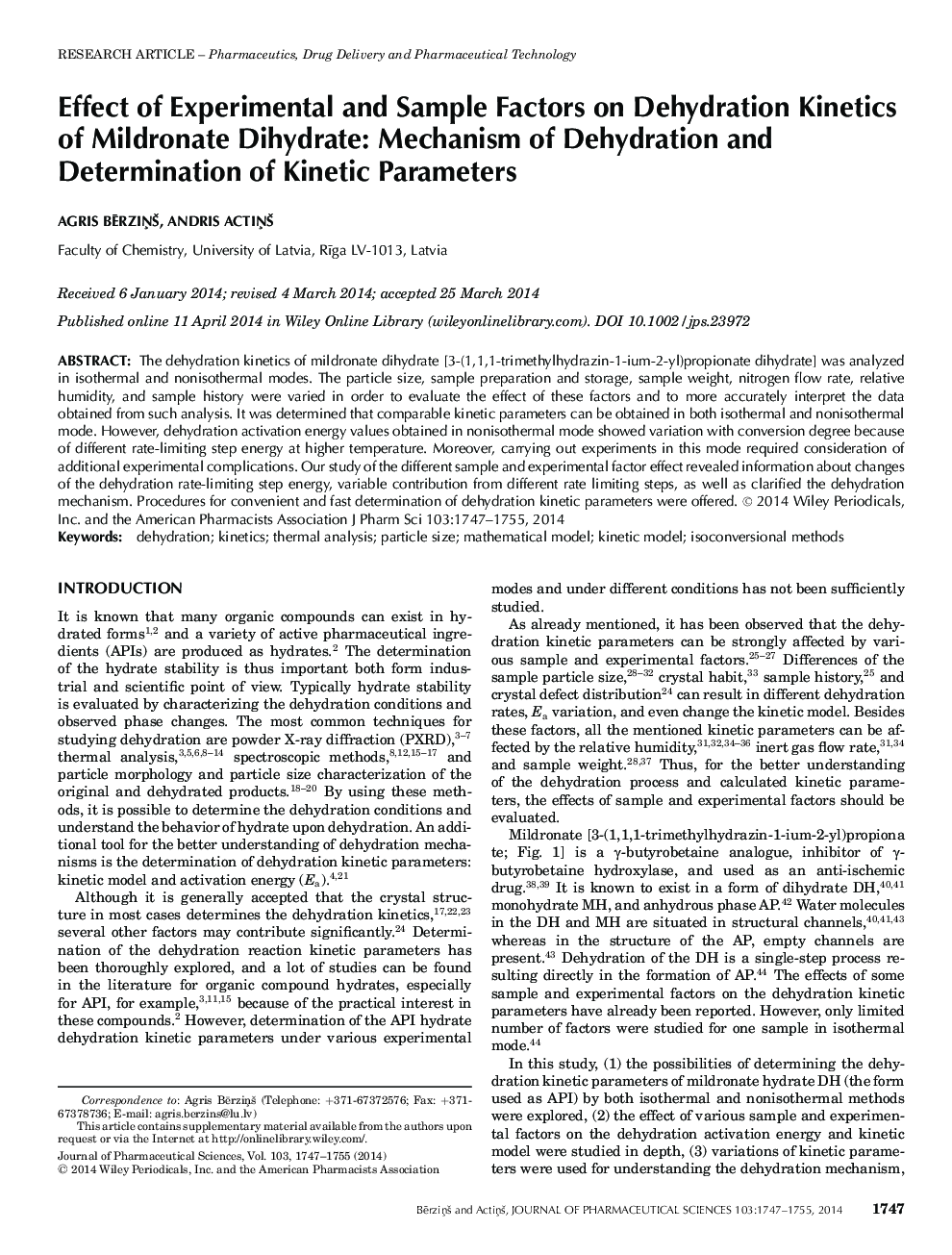| Article ID | Journal | Published Year | Pages | File Type |
|---|---|---|---|---|
| 10162489 | Journal of Pharmaceutical Sciences | 2014 | 9 Pages |
Abstract
The dehydration kinetics of mildronate dihydrate [3-(1,1,1-trimethylhydrazin-1-ium-2-yl)propionate dihydrate] was analyzed in isothermal and nonisothermal modes. The particle size, sample preparation and storage, sample weight, nitrogen flow rate, relative humidity, and sample history were varied in order to evaluate the effect of these factors and to more accurately interpret the data obtained from such analysis. It was determined that comparable kinetic parameters can be obtained in both isothermal and nonisothermal mode. However, dehydration activation energy values obtained in nonisothermal mode showed variation with conversion degree because of different rate-limiting step energy at higher temperature. Moreover, carrying out experiments in this mode required consideration of additional experimental complications. Our study of the different sample and experimental factor effect revealed information about changes of the dehydration rate-limiting step energy, variable contribution from different rate limiting steps, as well as clarified the dehydration mechanism. Procedures for convenient and fast determination of dehydration kinetic parameters were offered. © 2014 Wiley Periodicals, Inc. and the American Pharmacists Association J Pharm Sci 103:1747-1755, 2014
Keywords
Related Topics
Health Sciences
Pharmacology, Toxicology and Pharmaceutical Science
Drug Discovery
Authors
Agris BÄrziÅÅ¡, Andris ActiÅÅ¡,
